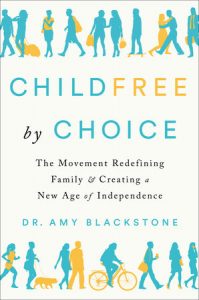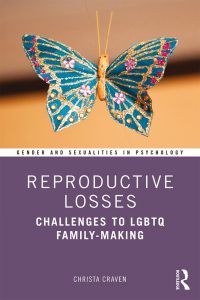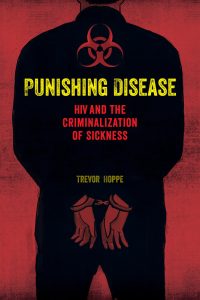In Making Motherhood Work: How Women Manage Careers and Caregiving, Caitlyn Collins investigates the ways in which policy impacts the experiences of working mothers. Through rich, in-depth interviews and observation, Collins conducts the very first systematic comparative study looking at women’s lived experiences with work-family policies. Through the participants’ own words and careful review of policy and existing research, Collins weaves together a compelling and nuanced investigation of the ways policy impacts women’s lived experiences. This five-year study articulates the ways both government and cultural support work to bring about what Collins calls work-family justice, an assurance that all citizens have access to opportunities to participate in both family care and paid work. This book examines the ways and the extent to which support systems fluctuate from country to country. Collins makes clear the importance of cultural values, which at least equal in importance to written policy in terms of creating work-family justice. Collins shares that policies alone cannot solve the struggles of working mothers. Rather, our cultural beliefs about gender, work, and motherhood must shift to fully address these challenges.
Collins discusses the current state of family policy and support in the United States as well as how the U.S. compares to other Western industrialized nations. Collins makes the key point that the current meager provision of federal support for families is by design, but by accident. She explains that U.S. stands as one of the nations “with no mention of the word ‘family’ in its constitution,” “no federal body dedicated specifically to family issues,” and “no explicit national family policy” (2). This book is particularly effective at illustrating the ways in which the cultural ethos of individualism in the United States places the responsibility for the care and feeding of the family squarely on the shoulders of the individual, and presents parenthood as a lifestyle choice. Collin raises the important point that while we see the act of childrearing as a private, individual one, in reality children grow up to be taxpayers and workers. Thus, citizens who were raised well actually function in the country’s best interest. However, the insistence of the U.S. on relying upon the market to solve individual problems has led to a privatized approach, where the most privileged members of our society hold access to the greatest number of work-family policies, leaving the most vulnerable among us having the least support. Generally speaking, we expect women in the U.S. to solve their own work-family stressors because, after all, we’ve told them they can “have it all.” Collins relates the previous studies showing the ways that family policies can actually hinder women’s progress at work, as well as gender relations and beliefs.
Collins’ study includes in-depth interviews with 135 working mothers living in the capital cities of Sweden, Germany, Italy, and the United States. Her fieldwork entailed a summer spent in each city, where she both observed and participated the lives of the women around her. Collins focused on middle-class mothers noting that Pamela Stone wrote that middle-class mothers are the “miners’ canary—a frontline indication that something is seriously amiss” (24). While the interviewees in Europe lacked racial diversity, her stateside sample included more than half of respondents identifying as a racial/ethnic minority.
This book examines the differences in lived experiences of working mothers by social context and location, and discusses solutions to the challenges of working mothers. Collins found that what mothers who work expect and want with regard to their family and work lives depends on their social context. Collins points out that the important factors for both comprehending and solving the conflicts faced by working mothers rely not upon social policies alone, but the larger social context and beliefs about parenthood, equality, and employment. She also discovered that who mothers blame for their unmet expectations varies widely depending upon where they live. US working mothers blame themselves, while mothers abroad blamed external forces (e.g. government, cultural forces). Also dependent on social context are the solutions employed by working mothers. Mothers in Italy, western Germany, and the US feared utilizing the policies available to them because of the resulting stigma they would endure. Working mothers in Sweden are the most satisfied. While Collins explains that she let Sweden quite optimistic about the ways that work-family policies can help further gender equality, she is careful to point out that merely importing Swedish policies to the US won’t work without addressing our cultural attitudes about work, gender, and parenting. Rather, she explains that any work-family policies require an environment that’s supportive of gender equality because policy alone won’t help mothers balance careers and responsibilities at home.
Collins contends that we must enact policies in packages, providing the example of paid parental leave policies alongside policies increasing availability of childcare. She also emphasizes the importance of building consensus when enacting new legislation. Ultimately, Collins explains that in Sweden policies enjoy success because of a cultural sense of shared responsibility with regard to childcare and work inside the home. Until we shift our view of raising children in the US from our current notion of it as a “lifestyle choice” to one of contribution to the continuation of society, no policy alone can alleviate the plight of working mothers in the US. Beyond policy, Collins shows that workplaces must increase flexibility in terms of both where and how we work, but also the ways we assess productivity, how we compensate workers, and that we will need to stop seeing men as the ideal worker. Instead, we must realize that everyone comes to work with outside lives, interests, and responsibilities requiring their time and attention. In other words, we need to reconceptualize work in the United States. Collins posits that creating work-family justice in the US will demand cultural shifts in our definitions of parenthood, our work structures, and our commitment to families and parents. She is fully aware that this is a monumental task. To begin to address this problem, Collins explains that we must begin to realize that the existing inequalities that result in differing experiences of work-family life, and further recognize that these are conditions we can address. Across social contexts, the working mothers in Collins’ study shared one single cause of stress: “the pressure to live up to an idealized definition of motherhood” (263).
Collins’ highly readable book provides a thorough analysis of the ways that cultural ideas about gender, work, and motherhood converge to create or alleviate burdens for working mothers. Her participants provide rich, moving, and generous accounts of their lived experiences, that require readers to explore their views on gender, motherhood, fatherhood, and work. With its focus on motherhood, employment, and gender, Making Motherhood Work is a useful resource to examine the ways gender politics and cultural ideas regarding employment and motherhood come to bear on women’s lived experiences.
Alicia M. Walker works as an assistant professor at Missouri State University in the Department of Sociology and Anthropology. Her previous book, The Secret Life of the Cheating Wife, investigated women’s participation in outside partnerships. Her forthcoming book focuses on men’s participation. Follow her on Twitter @AliciaMWalker1









